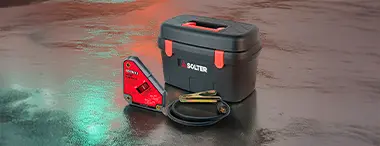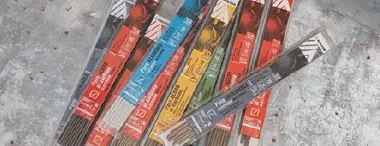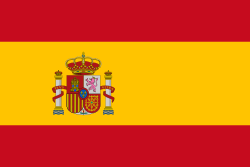MMA Electrode Welding
Process Description
Shielded metal arc welding (SMAW) is a process in which metal fusion is generated by the heat of an electric arc established between the tip of a coated electrode and the workpiece.
The filler material comes from the melting of the electrode, which transfers in the form of small droplets. Protection is achieved through the decomposition of the coating, which generates shielding gases and a liquid slag that floats over the weld pool and, upon solidifying, protects it.
Applications
It is one of the most widely used welding processes due to its great versatility.
It is applicable to:
- Carbon steels
- Alloy steels
- Stainless steels
- Cast irons
- Non-ferrous metals such as aluminum, copper, nickel, and their alloys
Common sectors:
- Construction
- Assemblies
- Industrial maintenance
- Field work
- Private use
Selection of Current Type (AC/DC)
This process can be performed using alternating current (AC) or direct current (DC), depending on the equipment, type of electrode, and material to be welded.
- Traditional SOLTER equipment: supplies AC
- SOLTER Inverter equipment: supplies DC
Polarity Selection (+/-)
In SOLTER equipment that supplies direct current (such as Inverters), you can choose:
- Reverse polarity: electrode holder connected to the positive pole (+), ground clamp to the negative (−)
- Direct polarity: electrode holder connected to the negative pole (−), ground clamp to the positive (+)
The appropriate polarity depends on the electrode specifications.
Types of Electrodes and Recommended Polarity
Types of Electrodes | Main Characteristics | Current |
|---|---|---|
| Rutile | Easy ignition, stable arc, clean bead. Ideal for beginners. | AC / DC (indifferent polarity) |
| Basic Electrodes | High strength, ideal for critical structures. | Requires DC |
| Cellulosic Electrodes | High penetration, produces a lot of gases. | DC with direct polarity |
| Acid Electrodes | High melting speed and good penetration. | Preferably AC or DC in flat position |
Welding Equipment
The equipment converts the mains current (230V, 50Hz) into appropriate parameters to melt the electrode in a controlled manner.
- Transformers: modify voltage and current; supply AC
- Rectifiers / Inverters: convert AC to DC and adjust electrical parameters
Electrode Holder Clamp
Holds the electrode and conducts the current. It must be kept in good condition to avoid overheating, which can reduce welding quality. Always select the appropriate electrode holder based on the electrode type and welding current.
Ground Clamp
The connection must be firm and clean, free of varnishes, oils, or paint. Poor contact raises the temperature and can interrupt the arc. The cable should be securely fastened.
Welding Parameters: Electrodes
The electrode generates the arc, provides filler material, and protects the weld pool.
Most common diameters:
1,6 mm · 2,0 mm · 2,5 mm · 3,25 mm · 4,0 mm · 5,0 mm
Most common lengths:
150mm · 200mm · 250mm · 300mm · 350mm · 450 mm
It is recommended to use the largest diameter possible that allows comfortable handling, depending on:
- Welding position
- Material thickness
- Type of joint
Generally, the recommended welding currents based on electrode diameter are:
| Electrode diameter | Welding current |
|---|---|
| 1,6 mm | 40-60 A |
| 2,0 mm | 60-80 A |
| 2,5 mm | 70-90 A |
| 3,25 mm | 90-130 A |
| 4,0 mm | 130-160 A |
In out-of-position welding (overhead, vertical, horizontal fillet), it is advisable to use smaller diameter electrodes and lower current to better control the weld pool.
Technologies Incorporated in Our Equipment
SOLTER’s Inverter equipment includes features that facilitate welding:
- Anti-Stick: prevents the electrode from sticking to the workpiece.
- Hot-Start: increases the current at the start to facilitate arc ignition.
- Arc-Force: maintains arc stability, even with difficult electrodes.
- Arc-Sense: stabilizes the arc at low currents or during critical welding processes.
Join our newsletter!
Be the first to receive our updates and brochures! We promise not to flood your inbox!





